Get ready for a 5G Internet of the Sky
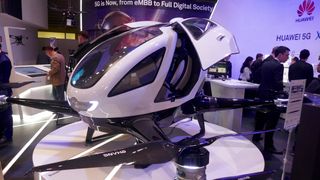
Autonomous cars will need 5G to avoid crashing into each other. But what about drones? Pilots hate drones. Airports hate drones. So do prison guards, wary of the airborne smuggling of drugs, smartphones, and even weapons (no kidding). Drones are evil, bad and need to be banned … that’s been the knee-jerk reaction of some. So, what’s the answer? The mobile phone network, of course.
Tracking drones
Can’t we use radar to track drones? Nope – commercial civilian drones are way too small. Cue the humble 4G SIM card, which the Global System for Mobile Communications Association (GSMA) – the hosts of the Mobile World Congress (MWC) – believes can make drones great again.
Tracking drones will give them an identity, avoid drone-on-drone collisions, and make drone incursions and misuse impossible at airports and prisons.
The first ‘drone taxi’
So, something for the mobile industry’s maybe-next-year to-do list? The arrival at MWC 2018 this week of the Ehang 184 is bringing drone regulations and technology into sharp focus.
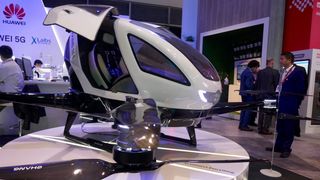
Ehang 184 autonomous passenger drone
As we’ve reported on before, this one-seater autonomous aerial vehicle, or ‘drone taxi’ (OK, flying car) should have already begun ferrying people between Dubai’s airport and the city's major hotels. Delayed it may be, but this electric, four-blade drone looks destined to soon become part of ‘the world's most intelligent transportation system'.
Dubai’s Roads and Transport Authority wants a quarter of all trips in Dubai to be via self-driving vehicles, including by ‘drone taxis’, by 2030. “It’s fully automated, and remotely monitored and controlled by a human operator,” says Andrew Parker, Programme Marketing Director, Internet of Things at GSMA. “The technology in the Ehang 184 will fly itself, but for safety reasons it’s monitored remotely to make sure it’s flying correctly in the right place.”
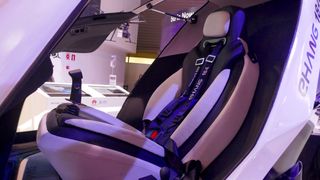
Room for one
Parker adds that a two-seater model will be available shortly, so people will have the reassurance of a pilot. People do love some reassurance, and that’s partly what’s behind the GSMA’s plan to network all drones.
The drone explosion
By 2050, drones will log more than 250 million flying hours per year over densely populated areas of the European Union, according to the Single European Sky Air Traffic Management Research (SESAR) project. That’s seven times the cumulative annual flying hours of conventional crewed aircraft.
Although it may stand-out on the show floor in Barcelona this week, the Ehang 184 will likely be the first of many, many commercial drones of all kinds. “This kind of commercial drone is going to explode in number,” says Parker. “From people-carrying drones to delivery drones to parcel-carrying drones, we’re going to see a huge array of applications.”
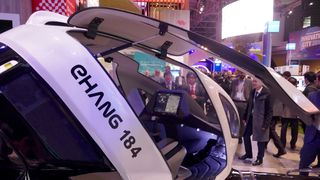
What Parker and the GSMA thinks is required to make the drone era a reality is to address the concerns of governments and regulators head-on. “If we can show that drones have an identity, and if we can put certain controls on drones to keep them away from sensitive places, and from each other, governments will be a lot happier to deploy them,” says Parker.
There’s already a group in the GSMA looking at the regulatory challenges surrounding the mass-deployment of drones. But the answer is becoming obvious; an Internet of the Sky.
What is the Internet of the Sky?
Though he admits that the Ehang 184 is an extreme example, Parker thinks that to encourage trust in the technology, every drone needs a SIM card inside it. The Ehang 184 already has a network need; it requires 100Mbps upload and download to serve its 4K cameras and LiDAR scanners.

A SIM means that if a drone drops out of the sky, it will be easy to tell who it belongs to, which is important for liability. “What we are looking at now is tuning the mobile network so we point it upwards as well as down, and by developing mobile networks like this we can use SIM cards for three things,” says Parker. “Drone navigation for crash-avoidance, drone geofencing so they can’t enter sensitive areas, and drone identification so we know the identity of the owner of the drone.” This is the Internet of the Sky.
Put simply, the Internet of the Sky will require exactly the same technology as autonomous vehicles will
Why drones have a 5G future
“The Internet of the Sky is an entirely new application for mobile networks, but it’s needed because the skies could become crowded, and will need advanced communication,” says Parker. “4G will lead to 5G, allowing decisions to be made much faster for collision avoidance.” Put simply, the Internet of the Sky will require exactly the same technology as autonomous vehicles will. “Mobile networks are uniquely placed to help in this kind of space,” says Parker.
The first drone-tracking trials
It seems he’s right on the money. Exactly what Parker is talking about is about to happen in Europe thanks to Vodafone, which announced last week a trial of the world’s first air traffic control drone-tracking and safety system.
Obviously it doesn’t yet use 5G, instead using 4G-powered Internet of Things (IoT) tech to develop a Radio Positioning System (RPS) for drones. Using 4G modems and a SIM embedded within each drone, Vodafone’s project enables real-time tracking, operator control, protective geofencing, emergency remote control, and SIM-based e-identification and owner registration.
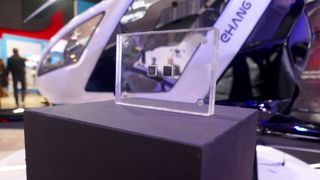
Trials of Vodafone’s drone tracking and safety tech are scheduled for Spain and Germany through 2018, and it’s planned for commercial deployment next year. “This groundbreaking innovation by Vodafone will help to ensure the skies stay safe as drones become ubiquitous, everywhere,” said Johan Wibergh, Vodafone Group Chief Technology Officer.
Eyes in the sky
In Barcelona the MWC was also showing a model of an existing fixed-wing drone, the XSun, which has a 4.5m wingspan covered in solar panels.
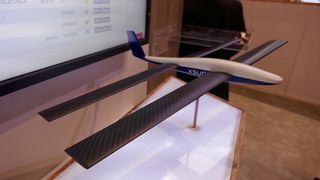
Capable of staying in the air for 14 days at a time – cue surveillance and air-sea rescue. “This could find lost people,” says Parker. “All you need is connectivity and you could keep it in the air for a very long time,” he says, stressing how much better a solution drones are than launching satellites. “You get a better view, better video, it’s cheaper, and you get a much lower footprint … it’s an eye in the sky that runs itself.”
MWC (Mobile World Congress) is the world's largest exhibition for the mobile industry, stuffed full of the newest phones, tablets, wearables and more. TechRadar is reporting live from Barcelona all week to bring you the very latest from the show floor. Head to our dedicated MWC 2018 hub to see all the new releases, along with TechRadar's world-class analysis and buying advice about your next phone.

No comments:
Post a Comment